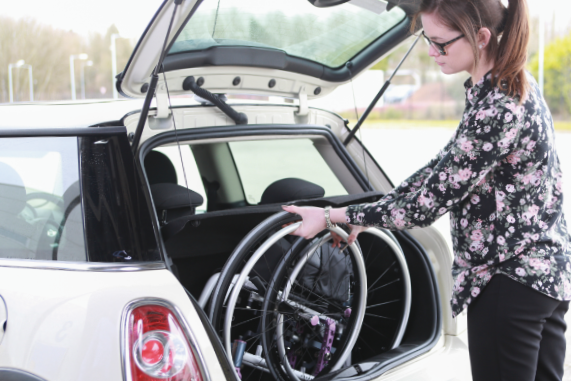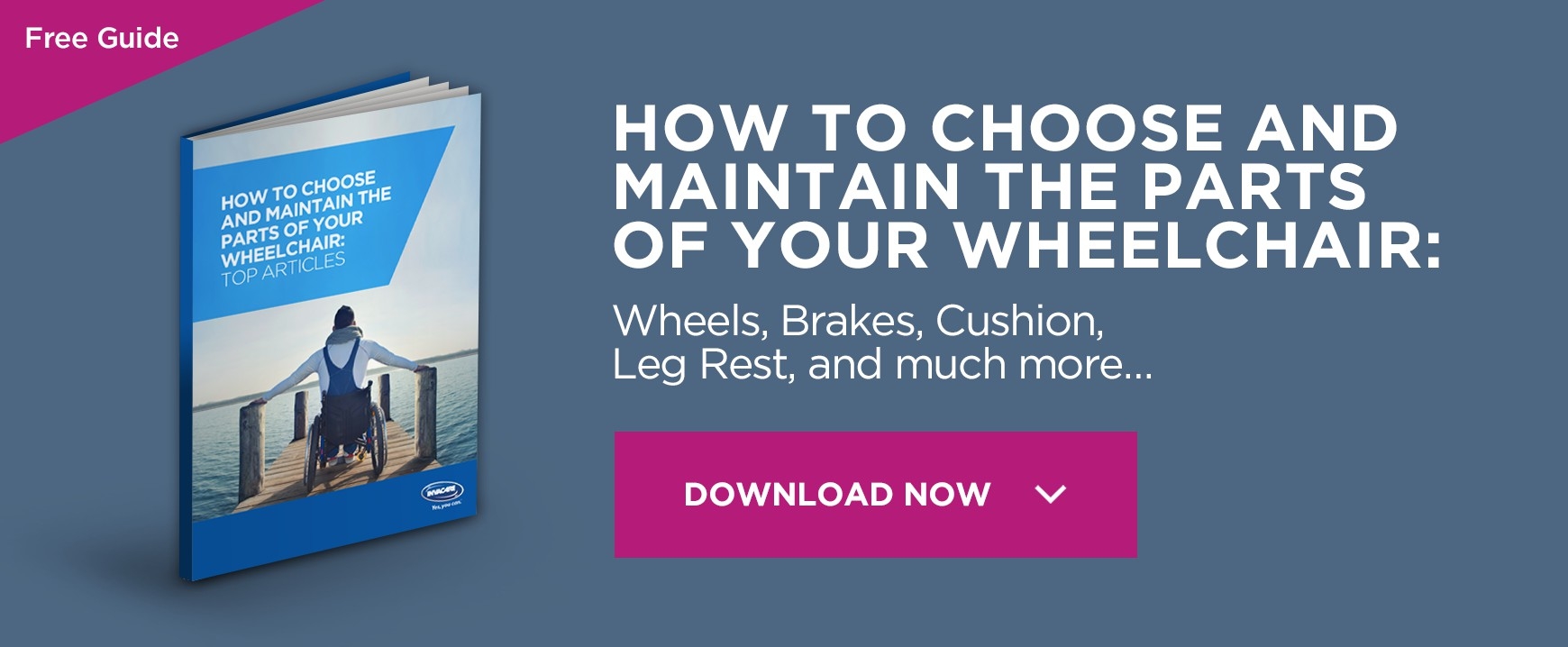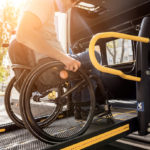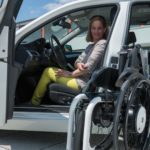Using a folding wheelchair in your car

Like all other members of the public, a wheelchair user should not have opportunities restricted by access. In fact, rather than living in a culture that labels people disabled we should in fact instead be labelling the environment disabling.
When considering the environment and wheelchair access we normally use building design, ramping, and the Disability Discrimination Act as main topics of conversation. However, strip access back to its basic component parts and the issue of getting from A to B must be resolved in the first instance.
For non-wheelchair users this is something that is understandably taken for granted; they use public transport without thought, flag down or book a taxi, cycle or in most cases jump into the car.
However, for a wheelchair user this experience can be very different. Of course there are a number of different wheelchair types with car access aids/adaptations available to support each differently.
For this blog we focus on the folding wheelchair and the needs of its user with a potentially huge spectrum of ability.
A folding wheelchair is very simply one that can be folded so that is takes up less room for storage. It may be folded vertically normally halving the width, horizontally (tending to be removing the height created by the backrest), or both. Along with ability to remove/fold the footrests this often allows the user of a folding wheelchair to travel with it in either the boot or back seat of their car. In some cases certain self-propelled folding wheelchair models allow the larger rear wheels to be removed. This not only reduces the overall footprint but reduces weight for either the user themselves or the attendant during storage.
4 main ways to ensure safe transfer of your folding wheelchair into the car:
Each of these 4 options solve issues with moving and handling for carers to different degrees and essentially do not affect the wheelchair user themselves as the transfer occurs first, however, some support the self-propelled user significantly more than others depending on their level of mobility without the wheelchair:
Ramp
Independent wheelchair user will propel the chair into the rear of the car via ramp then walk around the car.
Hoist or lift
Exactly as above but with reduced physical effort as aid provides all lifting.
Stowage system
The wheelchair can be stored on the roof, boot or back seat and allows the folding wheelchair user to transfer to their seat and independently store the wheelchair by electronic control.
Wheelchair accessible vehicle
Normally used for a wheelchair user with more complex transfer needs and/or with non-folding, often electric or motorised wheelchairs.
For wheelchair users or their carers who do not use any of the above it is often the case that the folding wheelchair is indeed folded and lifted into the vehicle. There are a number of video guides available which demonstrate good technique to support good back care and safe storage during transport.
However you choose to store your folding wheelchair in the car ensure that you consider your abilities and elements of the task you are likely to find more problematic. Consider the car you drive or will be driven in to review where the best space for storage will be as this may narrow your options and help you make the right choices. Finally ensure that you know the folding wheelchair well and the details of deconstruction and construction so that it is as light as possible when being manually lifted and takes up as little space in the vehicle as it can.
Considering each of these points will support freedom of movement and spontaneity to engage in activities meaningful to the wheelchair user.
Author: A. Ferry








